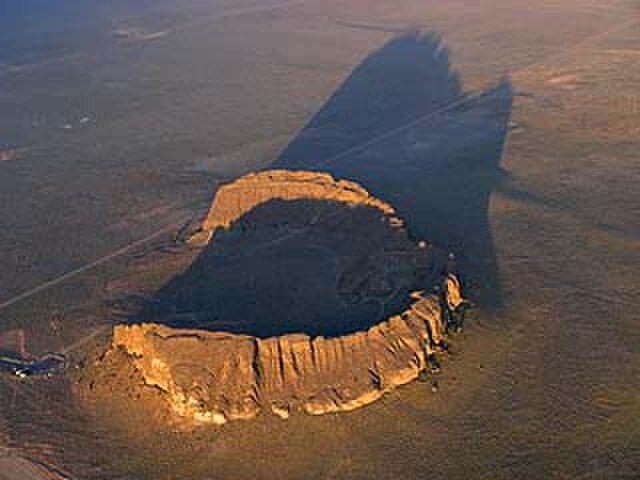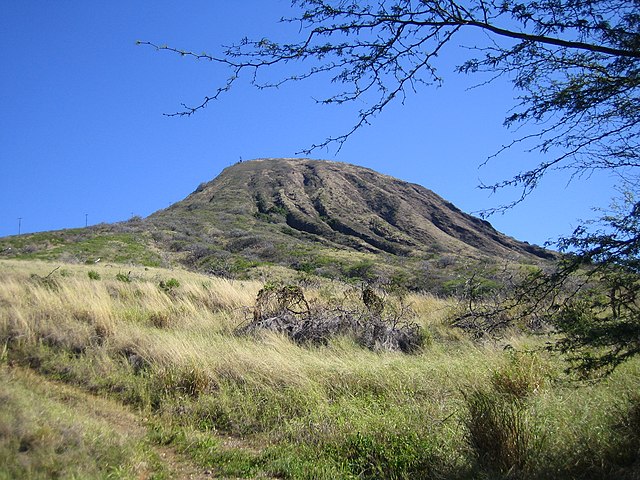Fort Rock is a tuff ring located on an ice age lake bed in north Lake County, Oregon, United States.
The ring is about 4,460 feet (1,360 m) in diameter and stands about 200 feet (60 m) high above the surrounding plain. Its name is derived from the tall, straight sides that resemble the palisades of a fort. The region of Fort Rock–Christmas Lake Valley basin contains about 40 such tuff rings and maars and is located in the Brothers Fault Zone of central Oregon's Great Basin. William Sullivan, an early settler in the area, named Fort Rock in 1873 while searching for lost cattle.
Aerial view of Fort Rock from the northeast.
Fort Rock looking east from the Fort Rock Road
Winter view looking northwest into open side
Phreatomagmatic eruptions are volcanic eruptions resulting from interaction between magma and water. They differ from exclusively magmatic eruptions and phreatic eruptions. Unlike phreatic eruptions, the products of phreatomagmatic eruptions contain juvenile (magmatic) clasts. It is common for a large explosive eruption to have magmatic and phreatomagmatic components.
Ashfall deposit of phreatomagmatic origin, overlying lapilli fall deposit of magmatic origin
Crest of old tuff ring, including part of the maar crater of a monogenetic volcano, Tenerife, Canary Islands. The maar crater has been used for agriculture.
Koko Crater is an old extinct tuff cone in the Hawaiian Island of Oahu.
Fort Rock, an eroded tuff ring in Oregon, US.






